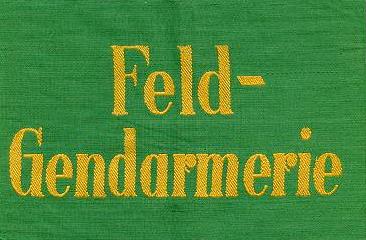
Feldgendarmerie des Heeres
Prior to mobilisation before the outbreak of World War Two, Germany had no full time permanent Military Police force. When MPs were needed units were created by temporarily assigning personnel from the civilian Police.
On mobilisation, these same experienced policemen were called upon to create the first of the Army's Feldgendarmerie units. Initially, they wore their original Police uniforms, and were identified as Military Police, solely by the wear of an armband on the left sleeve. It was in green cloth with the legend "Feld=Gendarmerie" machine woven in yellow rayon thread.

Subsequently, for a short transitional period, the original Police uniforms were used, but with the addition of an Army breast eagle and army shoulder straps before finally, these troops acquired their specific Army Feldgendarmerie uniforms.
This JNCO wears Police uniform but with Feld=Gendarmerie armband and army breast eagle added
These uniforms were absolutely standard Army issue with the addition of a Gendarmerie style sleeve eagle in orange thread on grey green, and orange Waffenfarbe to the collar tabs, shoulder straps and headgear.
Feldgendarmerie Sleeve Eagle
Feldgendarmerie Collar Tabs
Orange piped Feldgendarmerie straps for Feldgendarmerietrupp "GD"
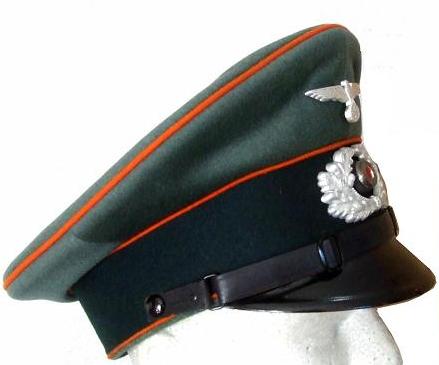
Feldgendarmerie NCO visor cap with orange Waffenfarbe piping.
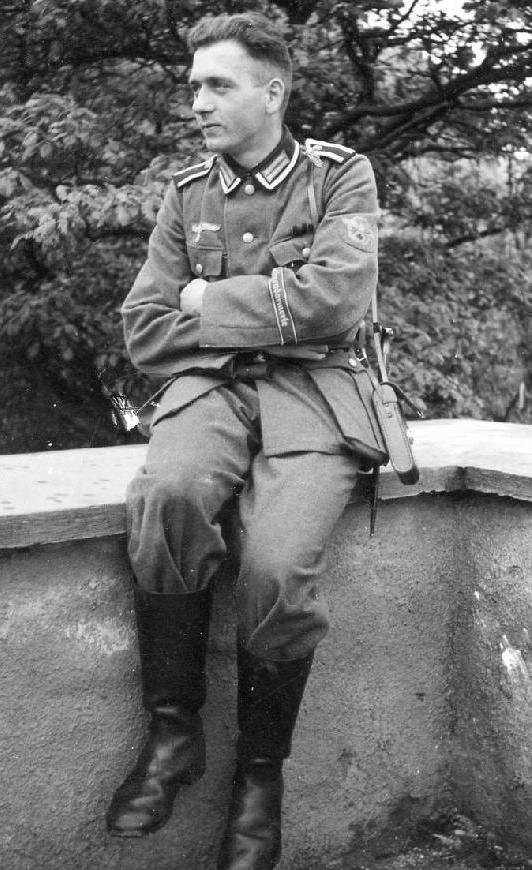
Typical appearance of a Feldgendarmerie NCO in the early part of the war. Standard army uniform with the Feldgendarmerie cuffband and sleeve eagle.
In addition, a special cuffband was introduced in machine woven brown rayon with grey edge stripes and the legend "Feldgendarmerie" in grey Gothic script. At least three original variants are known, virtually identical on the obverse but with completely different weave patterns on the reverse. The most common type features a mass of loose threads on the reverse, typical of so-called "BeVo" woven insignia.
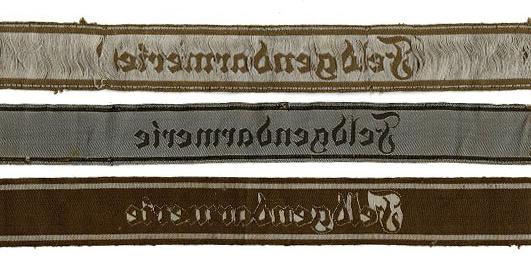
Different weave patterns seen on original Feldgendarmerie cuffbands

Original embroidered Feldgendarmerie cuffbands like this are rarely encountered.

Hand embroidered wire lettering on a darker brown band. This type of band was sometimes worn on the early transitional Police/Army uniforms

This NCO is clearly wearing an embroidered rather than woven cuffband
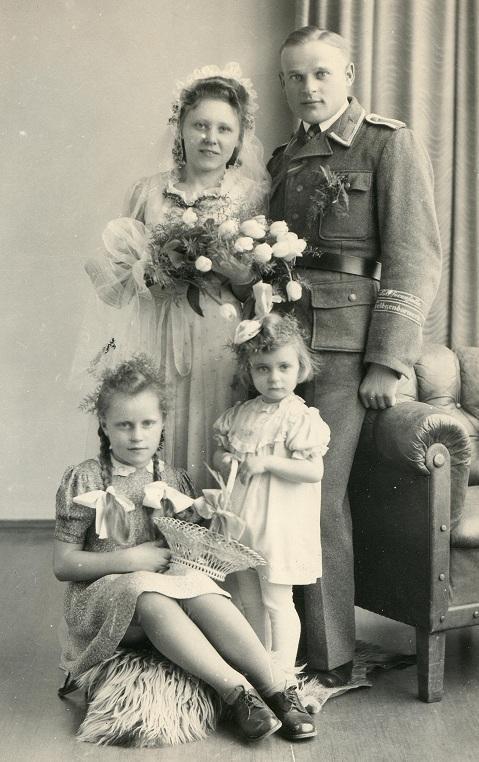
A young NCO of the Feldherrnhalle Division poses with his family. Note the wear of both the Feldherrnhalle and Feldgendaremerie cuffbands on the left sleeve.
The most iconic symbol of the Feldgendarm however was the Gorget plate or Ringkragen worn around the neck when on duty. This stamped steel plate on its neck chain gave rise to the perjorative nick-name of the Feldgendarmerie, "Kettenhunde" or "Chain Dogs"
Organisational Structure
The basic unit within the Feldgendarmerie was the Trupp (broadly equivalent to a Platoon) and most normal sized Army Divisions had an attached Feldgendarmerie Trupp. In some cases in larger units ( such as Grossdeutschland which eventually expanded to Korps size) a Feldgendarmerie Kompanie would be found but this would be the exception.
At higher command levels, such as at Army level an entire Feldgendarmerie Abteilung consisting of a HQ Staff Company (Stabs Kompanie) and at least 3 operational Kompanie.Feldgendarmerie units were also attached at Wehrkries ( Military District) level inside Germany and with district HQs (Feldkommandantur) in the field.
A Feldgendarmerie Trupp would normally be supplied with a number of light vehicles only, generally motor-cycles with sidecars, VW Kubelwagen jeeps, and light trucks such as the famous Opel "Blitz". In addition a number of civilian type vehicles were pressed into service as staff cars and a wide range may be seen on wartime photos.
In the early part of the war such impressed vehicles may still be seen sporting Pol. (Police) designated number plates or evenb civilian plates showing their origins. The standard correct plate for Feldgendarmerie units of the Army however was the basic military plate with "WH" prefix.
A Feldgendarmerie NCO with two junior ranks stand beside their Opel staff car. NOte the standard Army "WH" (Wehrmacht - Heer) number plate.
Typical armament for Feldgendarmen consisted of light weapons such as 9mm automatic pistols, Mauser Kar98k carbines and 9mm machine pistols such as the MP28 or MP40. Other heavier armament such as the MG34 or MG42 would be available if required but not normally carried on patrol duties.
An Unteroffizier of Feldgendarmerie escorting prisoners. He is armed with a Mauser Kar98k carbine.